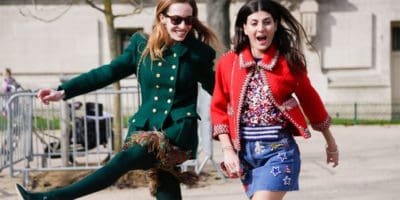
Piet Mondrian. Photo. From De Stijl, vol. 5, nr. 12 (December 1922): p. 179. photo sourced from Wikimedia commons
Top 10 Sensational Facts about Piet Mondrian
Piet Mondrian, a Dutch painter and pioneer of visual abstraction, was in charge of creating one of the most significant art trends of the 20th century.
Neoplasticism was created by Mondrian on his own, who came up with a means to depict a form that was entirely disconnected from reality. Without Mondrian’s contribution, modern art might not exist as we know it today.
Before developing his distinctive style, which he called Neoplasticism, Mondrian started as a traditional artist and dabbled with cubism and luminism. He spent the majority of his adult artistic career in Paris until relocating to New York City in 1940.
Discover Piet Mondrian’s family, life, career, accomplishments, and artwork through these 10 sensational facts.
1. He was named after his father

Anonymously. en: Piet Mondrian. en:1899. nl:The Hague, nl:Gemeentemuseum The Hague. photo sourced from Wikimedia commons
Pieter Cornelis Mondriaan was born on 7th March 1872 in the city of Amersfoort in the central Netherlands. He was the second of Pieter Cornelius Mondriaan’s five children with Johanna Christina de Kok, a schoolteacher.
Pieter Mondrian, Mondrian’s father, was a devout Protestant who dedicated his life to the church. His sister Johanna, who was born two years before Piet, ran the household when his mother Johanna was regularly sick.
Piet has three younger brothers named Louis, Willem, and Carel in addition to an older sister.
The Mondriaan family relocated to Winterswijk in the east of the Netherlands in April 1880 because Piet’s father had been appointed Head Teacher of a primary school there.
2. Mondrian’s Art was a spiritual pursuit

Piet Mondriaan – House on the Gein, 1741, reversed sketch photo by Netherlands Institute for Art History – Wikimedia commons
A member of the Dutch Theosophical Society, Mondrian’s artistic technique was defined by the Theosophical doctrine.
Mondrian felt that invention and art might be a gateway to spirituality, particularly if forms were stripped down to their most fundamental components.
In its most basic forms, basic compositions and shapes show the fundamental and opposing forces that govern the universe: male and female, positive and negative, dynamic and static, and black and white.
He was able to study and balance these forces thanks to his quest for mysticism, which helped him build his modern utopia.
3. He was twice rejected by the judges of Prix De Rome
Piet Mondrian’s early works were primarily landscape and still life paintings, which were popular art styles in the Netherlands at the time and adhered to representational traditions.
His works were shown for the first time in 1893 and again in 1897. Mondrian entered the Prix de Rome, the most prestigious art award in the Netherlands, in 1898 and 1901.
Both times, he abjectly failed, and his report noted that he lacked drawing talent and that he couldn’t capture vibrant action in a picture. Mondrian paid a buddy a visit in Brabant, Belgium, in 1903.
His two years spent in the nation had a significant impact on him, and although his work was still representational, it changed in style.
4. He contributed to Nobel Prize-Winning Science

The University in Leiden photo by Boon – Wikimedia commons
Mondrian was Reindert Pieter van Calcar’s assistant at Leiden University in the Netherlands.
Mondrian would draw bacteriological specimens for the laboratory as part of the cholera investigation. Between 1901 and 1920, the scientists involved in this study received three Nobel Prizes for their contributions to science.
5. Mondrian founded Neoplasticism
The De Stijl magazine was established by Mondrian and Theo Van Doesburg. De Stijl, which translates to “The Style,” was a term for Neoplasticism, a movement that also included architects who pushed the limits of abstract art by using primary colours, fundamental shapes, and composition.
By reducing shapes to their most basic forms, the movement aimed to repudiate outdated practices.
Mondrian wrote essays for the De Stijl periodical, defining his theory for the first time and coining the term Neoplasticism (the new plastic art) to describe this novel use of only line and colour in painting.
He made his initial attempts to articulate his philosophy in writing in a set of twelve essays titled De Nieuwe Beelding in de schilderkunst (Neo-Plasticism in Painting) that were published in the journal in 1917–18.
Piet Mondrian returned to France after the First World War was over and remained there until 1938. His ideas began to circulate throughout Europe after he published them in a book titled Le Néo-plasticisme (The Neoplasticism) in 1920.
6. His two Paintings were in Hitler’s “Degenerate Art Exhibition”

Portrait of Adolf Hitler. photo by Bundesarchiv, Bild – Wikimedia commons
650 works of art from museums all around Germany were confiscated for the “Entartete Kunst” exhibition because they were critical of the Nazi dictatorship.
The collection now includes artwork and paintings that ridicule religion, were produced by Jews, or criticized German women or troops.
The “Große Deutsche Kunstausstellung” (Great German Art Exhibition), a counter-exhibition, attracted half as many visitors as the Degenerate Art Exhibition.
He joined the Cercle et Carré (Circle and Square) group and its offshoot Abstraction-Création in the early 1930s. These were significant international art collectives that supported and presented abstract art.
Two of Mondrian’s works were displayed in Munich’s notorious “Degenerate Art” exhibition in 1937. With the rise of Adolf Hitler, Mondrian left Paris and moved to London in 1938.
When Paris fell in 1940 during the Second World War, he left London and moved to Manhattan in New York City, the U.S. He remained in Manhattan till his death.
7. Mondrian never married and never had any children
Piet Mondrian was never married and had no children. When asked why he explained that he couldn’t afford to marry when he was younger and never met the appropriate person later in life.
Mondrian had obsessive tendencies, such as a fixation on orderliness and cleanliness. He preferred seclusion and was reclusive and secretive. Fellow artist Naum Gabo described him as “not a somebody with whom you could have personal ties.” Mondrian lived modestly, with few things.
He was a hard worker who painted six days a week. He loved to dance, but his dance partners thought he was a lousy dancer.
8. His works inspired fashion and music

Piet Mondrian, 1942 – Broadway Boogie Woogie photo sourced from Wikimedia commons
Piet Mondrian’s career reached a new phase in the United States, defined by new features such as double lines and the substitution of black line patterns with coloured bands.
During this time, he created his most renowned artwork, Broadway Boogie Woogie. He is regarded as a pivotal figure in the evolution of modern abstract painting.
His work influenced two significant movements: The German Bauhaus movement, which emphasized reduced lines and colour theory, and the New York Minimalism movement, which emphasized geometric forms and a limited colour palette.
The influence of Piet Mondrian can also be observed in other fields. Yves Saint Laurent, a French fashion designer, created the Mondrian Collection of six cocktail dresses in 1965.
American rock band, White Stripes, were also deeply influenced by the artist’s works, and named their second studio album “De Stijl.”
9. Mondrian was a reclusive but sociable individual
Mondrian was a very private person who preferred to be in charge of his daily affairs. He didn’t like surprises, so he resisted getting a phone for as long as he could.
Additionally, if you wanted to visit him, you had to write him a letter first rather than just drop by unannounced. However, he was also a great host, enjoyed jazz and dancing, and enjoyed entertaining others (although many accounts say that he was terrible at it, as also testified by Peggy Guggenheim).
All you needed to do was known when each action should be done.
10. Mondrian preferred living among his work

P. Mondrian in his studio in Paris. 1923. Photo. From De Stijl – Wikimedia commons
He merged his home and workspace rather than keeping a separate studio, happily inviting guests over to lounge around and engage in philosophical discussion among his works in progress.
Mondrian advanced this method at his residences in London and Paris by painting the walls of those spaces a pure white, “with the odd patch of red,” rendering his art.
Planning a trip to Paris ? Get ready !
These are Amazon’s best-selling travel products that you may need for coming to Paris.
Bookstore
- The best travel book : Rick Steves – Paris 2023 – Learn more here
- Fodor’s Paris 2024 – Learn more here
Travel Gear
- Venture Pal Lightweight Backpack – Learn more here
- Samsonite Winfield 2 28″ Luggage – Learn more here
- Swig Savvy’s Stainless Steel Insulated Water Bottle – Learn more here
Check Amazon’s best-seller list for the most popular travel accessories. We sometimes read this list just to find out what new travel products people are buying.













